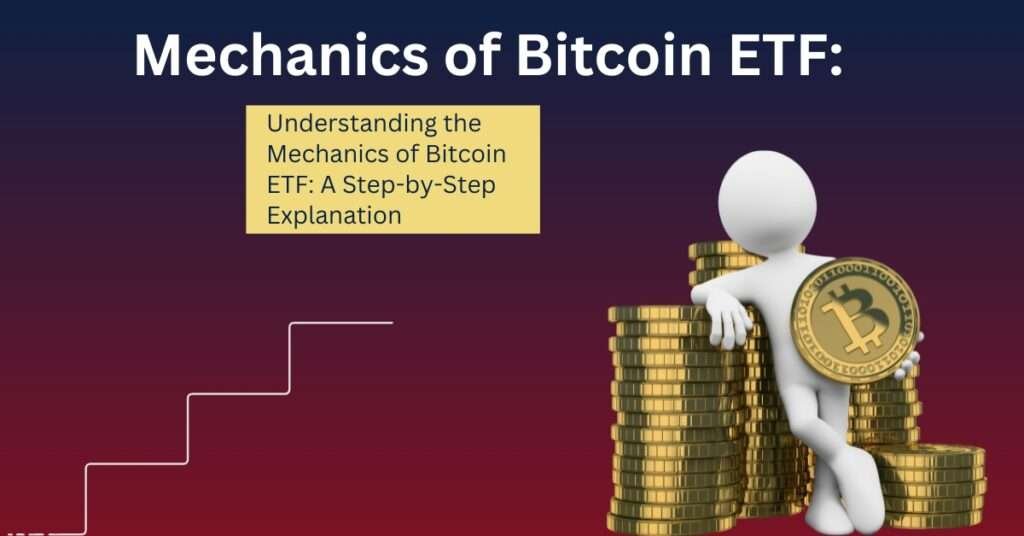
Introduction to Bitcoin ETFs
The world of cryptocurrency has been evolving rapidly, and one of the latest developments is the introduction of Bitcoin ETFs. If you’ve been following the news, you may have come across this term, but you might be wondering what exactly it is and how it works. In this article, I will provide you with a comprehensive step-by-step explanation of Bitcoin ETFs, from their definition to the process of investing in them.
A Bitcoin ETF, or exchange-traded fund, is a type of investment vehicle that allows investors to gain exposure to Bitcoin without having to directly own or manage the cryptocurrency. It functions similarly to traditional ETFs, which track the performance of a specific asset or index. In the case of Bitcoin ETFs, the underlying asset being tracked is Bitcoin.
The purpose of a Bitcoin ETF is to provide investors with an easy and regulated way to invest in Bitcoin. Instead of having to navigate the complexities of purchasing and storing Bitcoin themselves, investors can simply buy shares of the ETF through a brokerage account. This makes it more accessible to a wider range of investors who may not have the technical knowledge or resources to invest in Bitcoin directly.
How does a Bitcoin ETF work?
Now that we have a basic understanding of what a Bitcoin ETF is, let’s dive deeper into how it actually works. A Bitcoin ETF operates by holding a certain amount of Bitcoin and issuing shares that represent ownership of that Bitcoin. These shares are then listed and traded on a regulated exchange, similar to how stocks are traded.
The value of the shares is directly linked to the price of Bitcoin. As the price of Bitcoin fluctuates, so does the value of the shares. This allows investors to gain exposure to the price movements of Bitcoin without actually owning the cryptocurrency. It also provides a level of liquidity, as investors can easily buy or sell shares of the ETF on the exchange.
The ETF itself is managed by a fund manager, who is responsible for buying and selling Bitcoin to ensure that the fund’s holdings accurately reflect the price and performance of Bitcoin. The fund manager may also implement various strategies, such as hedging or rebalancing, to optimize the fund’s performance.
Advantages of investing in Bitcoin ETFs
Investing in Bitcoin ETFs offers several advantages compared to investing directly in Bitcoin. Firstly, it provides a more convenient and regulated way to gain exposure to Bitcoin. Investors can easily buy and sell shares of the ETF through their brokerage account, without the need to set up a separate cryptocurrency wallet or navigate the complexities of cryptocurrency exchanges.
Secondly, Bitcoin ETFs offer a level of diversification. Instead of putting all your eggs in one basket by investing solely in Bitcoin, you can invest in a fund that holds a diversified portfolio of cryptocurrencies. This can help mitigate the risk associated with investing in a single cryptocurrency and potentially provide better long-term returns.
Another advantage of Bitcoin ETFs is the ability to invest with smaller amounts of capital. With traditional investments, such as real estate or stocks, the barrier to entry can be quite high. However, Bitcoin ETFs allow investors to start with smaller amounts, making it more accessible to a wider range of individuals.
Risks associated with Bitcoin ETFs

While Bitcoin ETFs offer several advantages, it’s important to be aware of the risks associated with this type of investment. One of the main risks is the volatility of Bitcoin itself. Bitcoin is known for its price fluctuations, which can be quite dramatic at times. This means that the value of your investment in a Bitcoin ETF can also be subject to significant swings.
Another risk is the potential for regulatory changes. Cryptocurrency regulations are still evolving, and there is always a possibility that governments may introduce new regulations or restrictions that could impact the operation of Bitcoin ETFs. It’s important to stay informed about the regulatory landscape and understand the potential implications for your investment.
Additionally, there is the risk of technical issues or security breaches. While Bitcoin ETFs provide a more convenient way to invest in Bitcoin, they still rely on technology and are vulnerable to hacking or other technical failures. It’s crucial to choose a reputable and secure ETF provider to minimize these risks.
Step-by-step process of investing in Bitcoin ETFs
Now that we understand the basics of Bitcoin ETFs and the associated risks, let’s walk through the step-by-step process of investing in a Bitcoin ETF.
- Open a brokerage account: The first step is to open a brokerage account with a reputable provider that offers Bitcoin ETFs. You’ll need to provide some personal information and complete the necessary documentation.
- Fund your account: Once your brokerage account is set up, you’ll need to deposit funds into it. This can be done through a bank transfer or other accepted payment methods.
- Research and choose a Bitcoin ETF: Before investing, it’s important to research different Bitcoin ETFs available in the market. Consider factors such as the fund’s track record, expense ratio, and the underlying assets it holds.
- Place an order: Once you’ve chosen a Bitcoin ETF, you can place an order through your brokerage account. Specify the number of shares you want to purchase and review the order details before confirming.
- Monitor your investment: After your purchase is complete, it’s important to regularly monitor the performance of your Bitcoin ETF. Keep an eye on the price of Bitcoin and any news or developments that may impact the cryptocurrency market.
- Sell or hold: Depending on your investment goals and market conditions, you can choose to sell your Bitcoin ETF shares or hold onto them for the long term. Remember to consider any potential tax implications when making investment decisions.
Differences between Bitcoin ETFs and other investment options
Bitcoin ETFs are just one of the many ways to invest in Bitcoin and cryptocurrencies. Let’s explore some key differences between Bitcoin ETFs and other investment options.
- Direct ownership vs. indirect ownership: When you invest directly in Bitcoin, you own the cryptocurrency itself. With Bitcoin ETFs, you indirectly own Bitcoin through shares of the ETF.
- Regulation and oversight: Bitcoin ETFs are subject to regulatory oversight, which provides a level of investor protection and transparency. Other investment options, such as investing in Bitcoin through a cryptocurrency exchange, may have less regulatory oversight.
- Diversification: Bitcoin ETFs typically offer a diversified portfolio of cryptocurrencies, whereas investing directly in Bitcoin means you are exposed to the price movements of a single cryptocurrency.
- Accessibility: Bitcoin ETFs make it easier for a wider range of investors to gain exposure to Bitcoin, as they can be purchased through traditional brokerage accounts. Investing in Bitcoin directly may require more technical knowledge and resources.

Popular Bitcoin ETFs in the market
As Bitcoin ETFs gain popularity, several options have emerged in the market. Here are some of the popular Bitcoin ETFs available to investors:
- XYZ Bitcoin ETF: This ETF tracks the performance of Bitcoin and offers investors a convenient way to gain exposure to the cryptocurrency market.
- ABC Crypto ETF: The ABC Crypto ETF provides a diversified portfolio of cryptocurrencies, including Bitcoin, Ethereum, and Litecoin.
- DEF Digital Asset Fund: DEF Digital Asset Fund offers exposure to a broader range of digital assets, including Bitcoin and other cryptocurrencies.
Before investing in any Bitcoin ETF, it’s important to research and understand the specific features, track record, and expense ratio of the fund.
Regulations and legal considerations for Bitcoin ETFs
Bitcoin ETFs operate within the framework of existing financial regulations, and their availability may vary from country to country. It’s important to familiarize yourself with the regulations and legal considerations specific to your jurisdiction before investing in Bitcoin ETFs.
In some countries, Bitcoin ETFs may not be available due to regulatory restrictions or a lack of approved offerings. It’s crucial to consult with a financial advisor or legal professional to ensure compliance with local laws and regulations.
Conclusion
Bitcoin ETFs have emerged as a popular investment option for those looking to gain exposure to Bitcoin without directly owning the cryptocurrency. They provide a regulated and convenient way to invest in Bitcoin, offering advantages such as diversification, accessibility, and ease of trading.
However, it’s important to be aware of the risks associated with Bitcoin ETFs, including price volatility, regulatory changes, and technical vulnerabilities. By understanding the mechanics of Bitcoin ETFs and following a step-by-step investment process, you can make informed decisions and navigate the world of cryptocurrency investing with confidence.
Remember to always do your due diligence, research different Bitcoin ETF options, and consult with professionals when needed. With careful consideration and a thorough understanding of the risks and rewards, Bitcoin ETFs can be a valuable addition to your investment portfolio.


Leave a comment